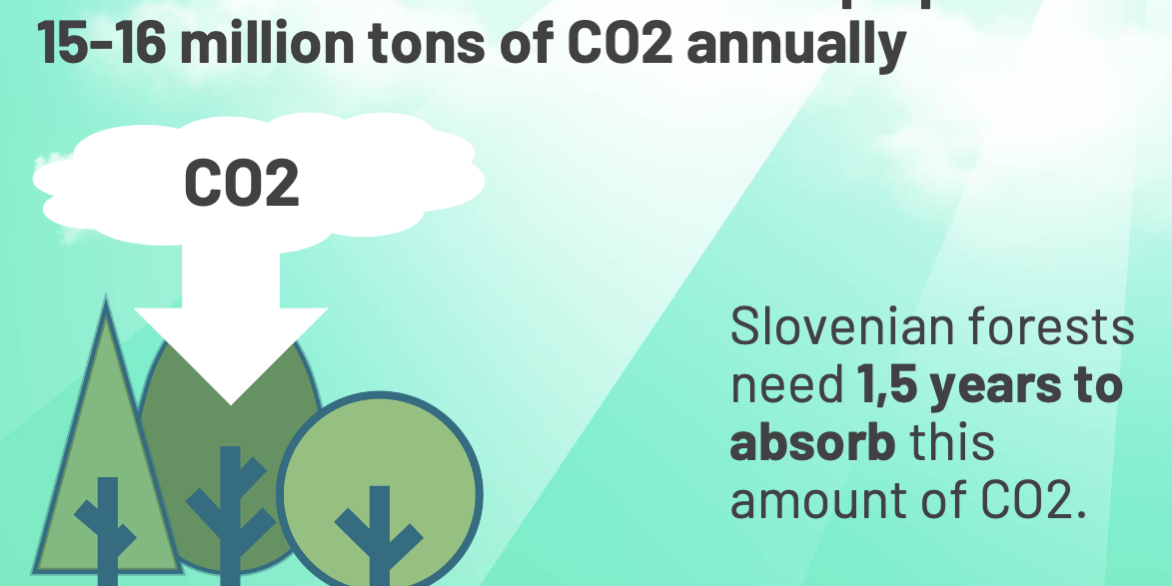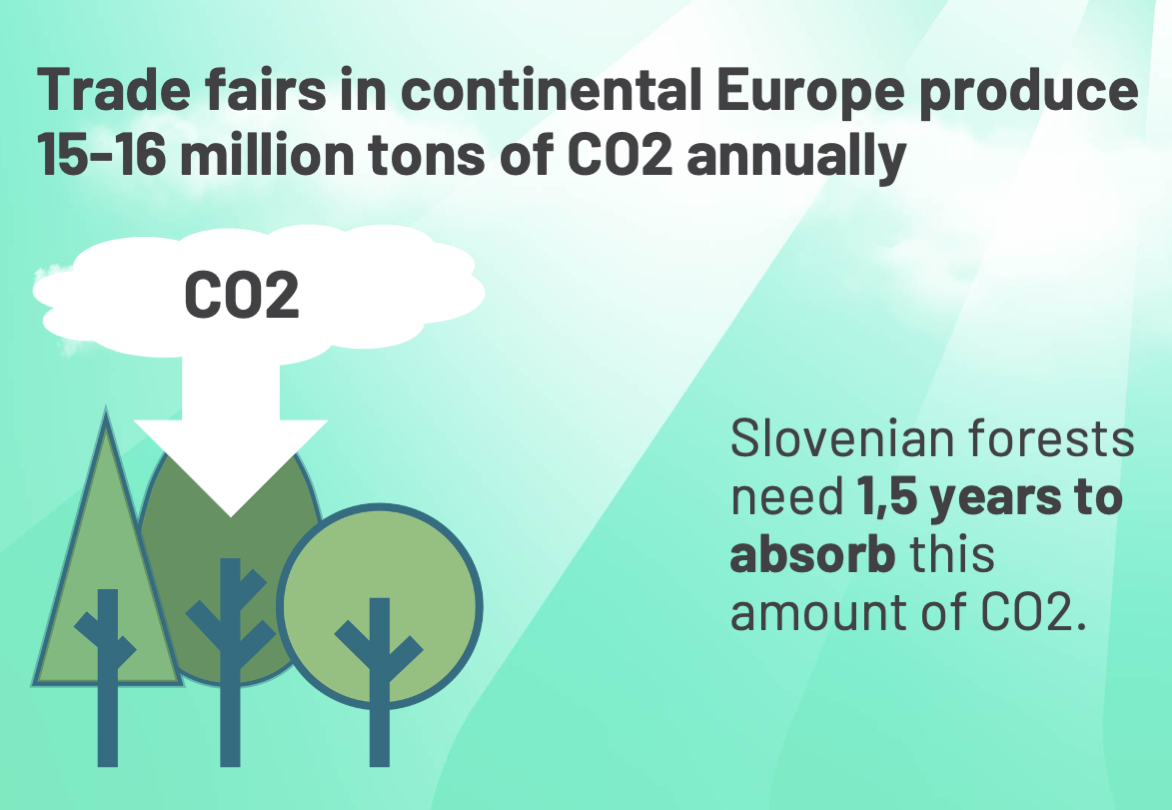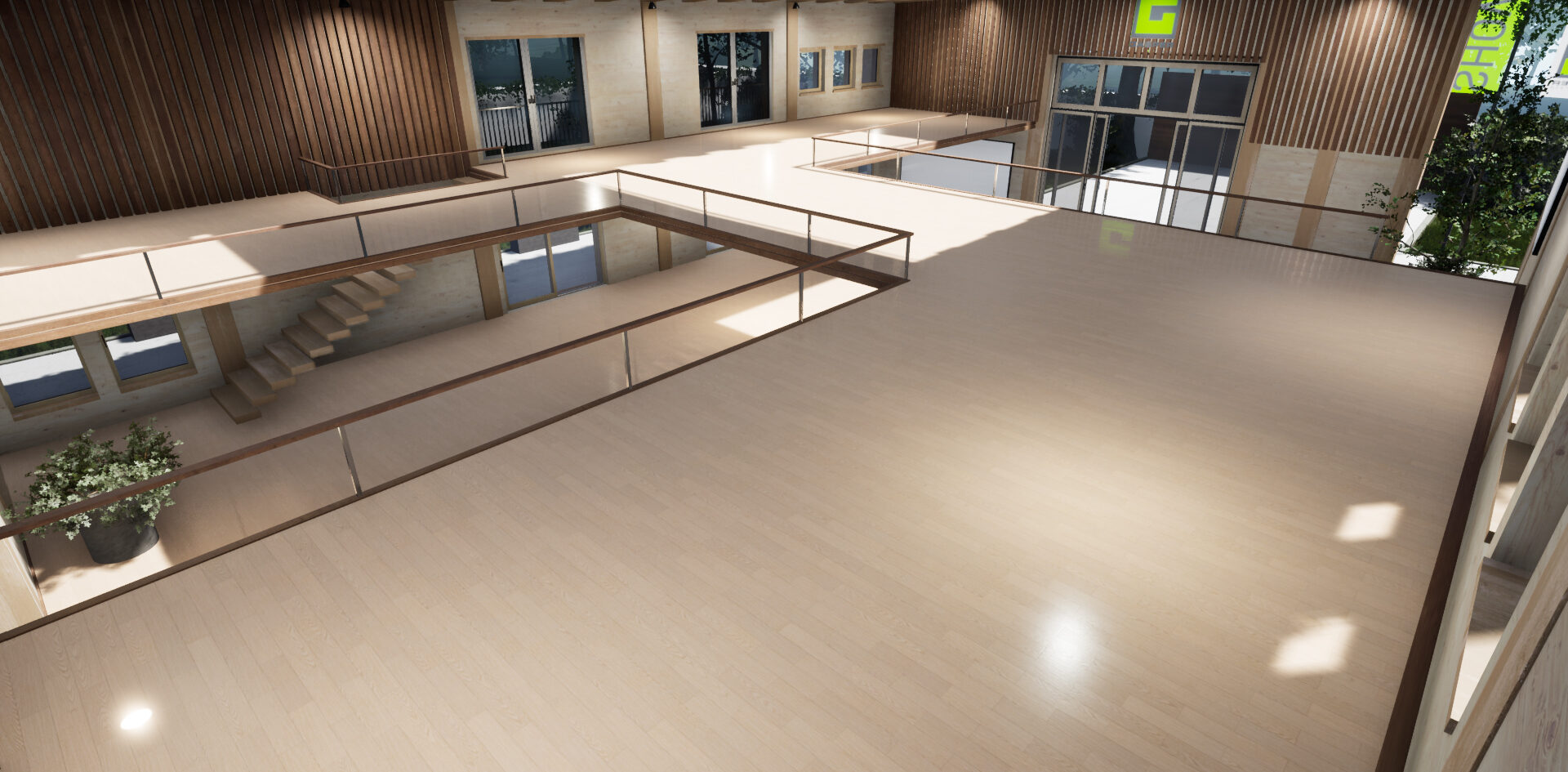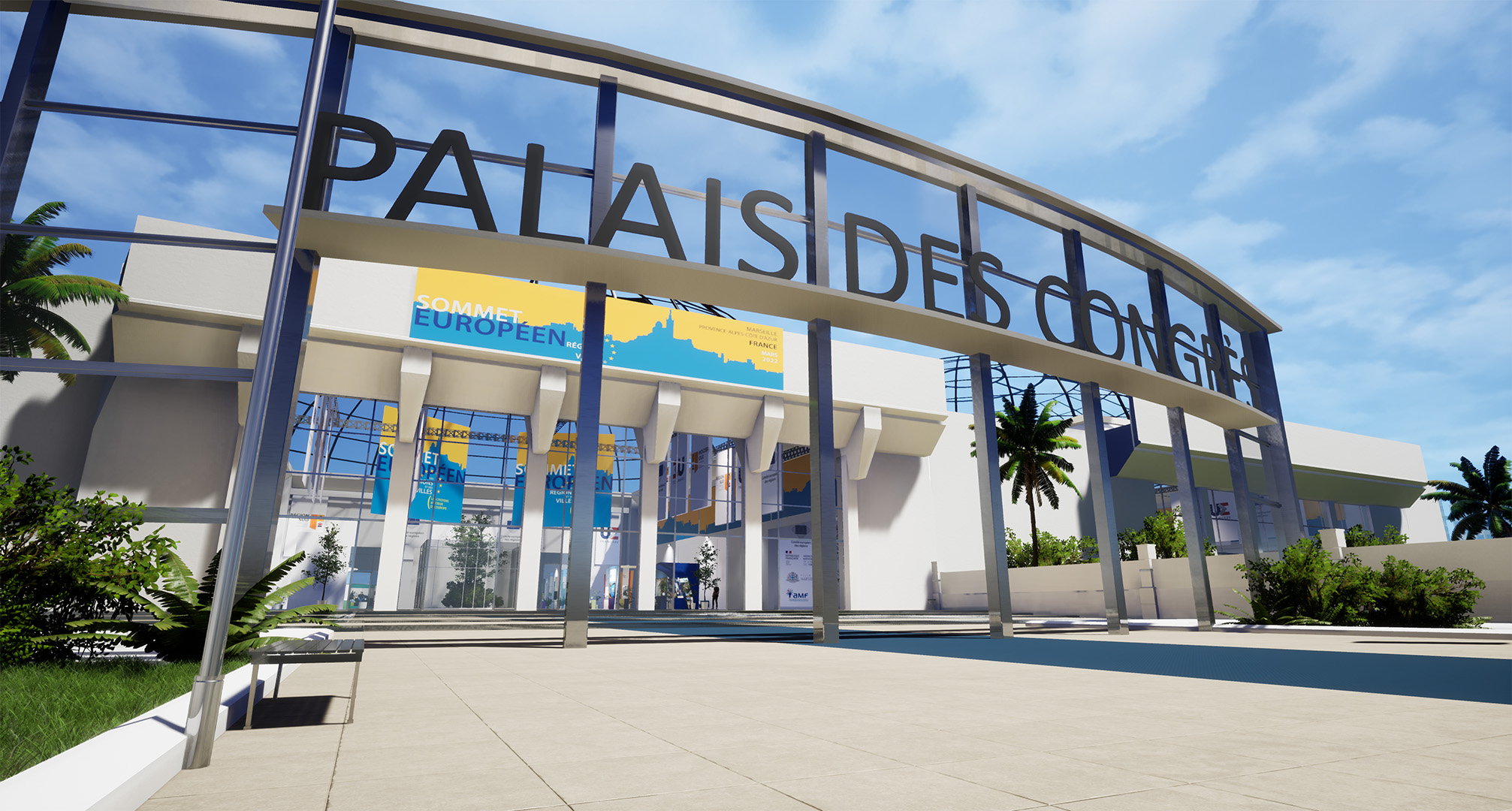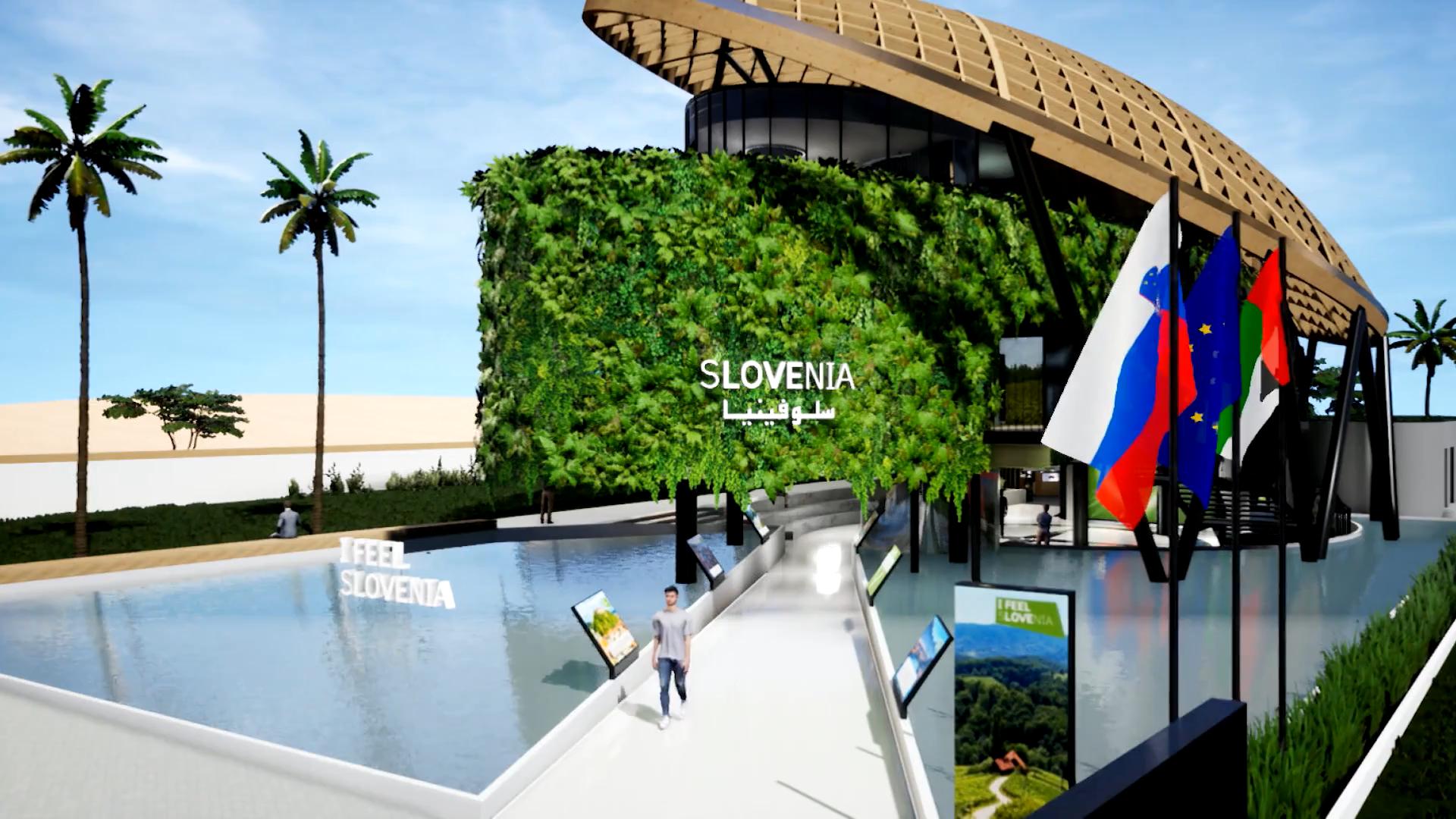Do you enjoy conferences, exhibitions, and trade fairs? Most people who enjoy socializing and meeting old and new friends do enjoy them.
But the MICE industry has sustainability problems
To name just a few of its “greatest sins”:
- long transport distances;
- huge quantities of materials are transported for an exhibit lasting just a few days;
- a massive amount of waste is produced;
- large quantities of single-use or non-recyclable materials are produced;
- the lack of organizational policies regarding how to reduce the environmental burden, etc.
We started to develop a photo-realistic 3D immersive application for exhibitions in 2019. When the outbreak of Covid occurred in 2020, we thought that virtual immersive fairs would be a promising market. But in reality, the Zoom, Teams, and Google Meet applications were the winners of the pandemic. Generally speaking, the MICE industry was shocked and unprepared. It merely postponed physical events for a month or two, half a year, a year… Indeed, it even happened that some biannual events were postponed for four years. Some event organizers organized events on-line with 2D applications, and to my knowledge very few or no one used a truly immersive 3D – metaverse – service.
The market was simply not mature enough; there was much too low market acceptance of immersive virtual events.
Can the metaverse revitalize the industry, make it greener, and provide a better experience and more fun?
Or is the truth what one of our (physical event) clients said: “The virtual pavilion looks great, but we are all very anxious to meet our customers again F2F, we have had enough streaming and virtual meetings with them 😊.“
Some people may still feel ‘Zoom fatigue’, some people feel uncomfortable using avatars and XR tools generally, some are confused by XR, some feel that it is non-intuitive. The avatar experience is still a work in progress. All this might be true, but there are so many opportunities in the metaverse for the MICE and trade fair industry in particular.
Covid caused an important shift in behavior and one of the consequences resulting from the Covid pandemic is that a more and more participants of conferences want to participate in a virtual manner. In case of i.e. European Commission events a third of the participants prefer to participate in a virtual manner.
I don’t believe trade fairs, exhibitions, and events will entirely move to the metaverse any time soon, but I am quite convinced that the metaverse will increasingly contribute to the MICE industry. It will not just make it greener, but also more attractive. The metaverse will improve the experience of several events very soon in the future.
Here are just a few examples from practice:
Simple hybrid events
Instead of transporting tons of materials, heavy exhibits, including machinery, you can simply invite visitors to explore your virtual presentation with XR tools. Various features can be presented and enhanced in different modes, such as “explode” mode, etc. Prototypes and products in a late project phase can be presented. Last but not least, with XR tools a simple stand at a fair can be expanded into a large exhibition hall.
Full hybrid events
For me, a full hybrid event is not an event where half of the participants sit at home behind a computer screen with a Zoom type of application. A full hybrid event is an event where distant participants have a fully immersive 3D experience in which they can participate in the form of avatars in the real space and interact with physical participants and exhibitors. The exhibitors and physical visitors can see the virtual participants with the help of various XR or AR tools, such as smart glasses or even smart phones. In a full hybrid event, people can have a mixed presence, virtual visitors can join and fully interact with those at a stand.
Metaverse-enhanced conferences
A metaverse fair can complement a conference. Instead of renting another hall for sponsors to build stands and present their offers, organizers can provide an immersive virtual hall. Sponsors can present their products and services in the metaverse. It is a rational solution in terms of space usage, the resulting carbon footprint, and the materials used. Conference participants, either physical or virtual, can visit exhibitors, interact with them, and share materials.
Digital Twin – EXPO pavilions are a very good example of what is possible. The physical version offers a lot of interesting content, but only for visitors physically present. A digital twin can show content to many more visitors visiting the pavilion in the metaverse, who can even follow events streamed from the physical pavilion and vice versa. The digital twin of the Slovenian Pavilion at EXPO 2020 offered the same content experience as the physical pavilion; events were also streamed from the physical to the virtual pavilion. As further proof of concept, just recently Burj Khalifa launched a digital twin.
There are also many exhibitions in art, science, and other areas that can reach a much wider audience globally with the help of the metaverse.
To sum up. The technology is here. XR evolution is rapid. The tools are developing at the speed of light. New VR/AR headsets with improved performance are expected to enter the market next year.
The metaverse can make exhibitions more green and more accessible.
It offers so many possibilities to enhance events in order to make them greener, more accessible, to improve user experience, and also to provide more fun.
UX is crucial
The real challenge for innovation and creativity is to build a user friendly UI in order to improve the user experience. Speaking of trade fairs, we have three kinds of interconnected users: exhibitors, organizers, and visitors, and in the case of exhibitions, primarily organizers and visitors.

